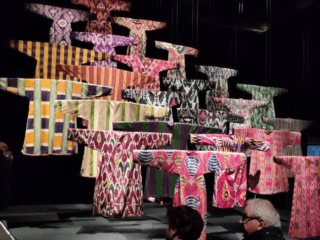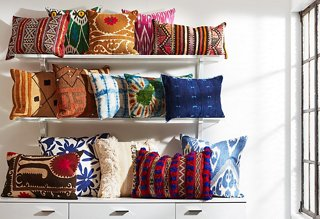- Published on
Unraveling the Significance of Textiles in Moroccan Dowries and Celebrations
- Authors

- Name
- Adil ABBADI
Introduction

In Morocco, textiles are more than just beautiful fabrics; they are woven with love, tradition, and cultural significance. From the intricate embroidery to the vibrant colors, each piece tells a story of family's history, social status, and cultural heritage. In this article, we'll explore the crucial role textiles play in Moroccan dowries and celebrations, unraveling the threads of tradition, family treasures, and cultural significance.
- Cultural Context
- Traditional Significance of Textiles in Dowries
- Traditional Significance of Textiles in Celebrations
- Modern Relevance and Cultural Preservation
- Conclusion
- Cultural Call-to-Action
Cultural Context
Moroccan textiles have been an integral part of the country's rich cultural heritage for centuries. The art of weaving and embroidery was introduced by the Arab and Berber tribes, who brought with them their unique techniques and designs. Over time, Moroccan textiles evolved, incorporating influences from Mediterranean, African, and European cultures. The result is a distinctive style characterized by vibrant colors, intricate patterns, and exquisite craftsmanship.
Traditional Significance of Textiles in Dowries
In Moroccan culture, a dowry (called "shurka" or "sadaq" in Arabic) is an essential part of the wedding celebration. The bride's family prepares a collection of textiles, jewelry, and other valuable items, which are presented to the groom's family as a symbol of their commitment to the union and a token of respect. The dowry is not only a material expression of love and appreciation but also a representation of the family's social status and cultural heritage.
Textiles play a central role in the dowry, as they are often the most valuable and intricate pieces. The bride's family carefully selects fabrics, colors, and patterns, which are then skillfully embroidered or woven by local artisans. These textiles are not only beautiful but also hold deep emotional and cultural significance.

Traditional Significance of Textiles in Celebrations
Beyond dowries, textiles also play a vital role in various Moroccan celebrations, such as weddings, Eid al-Fitr, and Eid al-Adha. During these occasions, families adorn their homes with vibrant textiles, which symbolize joy, hospitality, and cultural heritage. The colors, patterns, and designs of these fabrics are steeped in tradition and significance, reflecting the country's rich cultural diversity.
For example, the traditional Moroccan wedding blanket, known as "akhdar," is an exquisite piece of textile art, often featuring intricate embroidery and vibrant colors. This blanket is placed on the wedding bed but also serves as a symbol of good luck, prosperity, and fertility.

Modern Relevance and Cultural Preservation
While traditional textiles remain an integral part of Moroccan culture, modernization and globalization have posed challenges to their preservation. Many young Moroccans are opting for more modern, machine-made fabrics, threatening the traditional artisanal techniques and cultural heritage.
To counter this trend, various initiatives have been launched to promote and preserve Moroccan textiles. The Moroccan government, NGOs, and artisanal cooperatives are collaborating to support local artisans, providing training, resources, and market access.
Additionally, many Moroccan designers are incorporating traditional techniques and motifs into modern designs, creating a unique blend of cultural heritage and contemporary style. This fusion not only helps preserve the cultural significance of textiles but also promotes Moroccan culture globally.
Conclusion
Moroccan textiles are more than just beautiful fabrics; they are woven with love, tradition, and cultural significance. From dowries to celebrations, textiles play a vital role in Moroccan family traditions, social status, and cultural heritage. As we navigate the complexities of modernization and cultural preservation, it is essential to appreciate and support the artisans, designers, and initiatives that work tirelessly to preserve Moroccan textiles for generations to come.
Cultural Call-to-Action
As we explore the vibrant world of textiles, we invite you to delve deeper into Moroccan cultural heritage. Attend a traditional Moroccan wedding, explore the souks, and marvel at the intricate embroidery and vibrant colors. Support local artisans, and appreciate the craftsmanship that goes into each piece. By doing so, we can ensure that these cultural treasures continue to thrive, weaving together family, tradition, and identity for generations to come.
